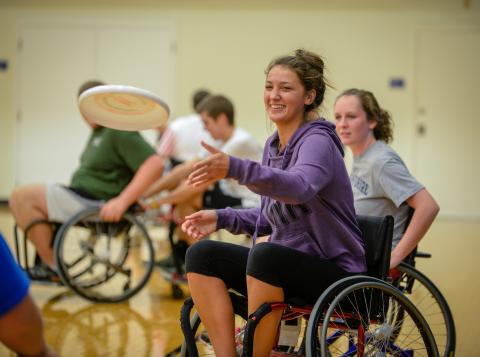
Whether you know it or not, we have all interacted with people with disabilities at multiple points in our lives. Most people just think about interactions with people with visible disabilities, but disability can be visible or invisible. If this is something you have not actively thought about before, you might be uncertain about where to begin and how to act.
Things to Do When Interacting
- Be compassionate, kind, and understanding
- Listen empathetically
- Focus on the individual in all their diversity
- Focus on strengths instead of perceived impairments
- Assume competence and expertise
- Ask permission prior to helping
- Carefully consider language use
- Begin with person first language, but be open to identity first language
- Issues and concerns should be seen as learning moments
- Know when to ask for help
- Speak directly to the person with a disability
- Don’t avoid the person or talk about them as if they are not in the room
- If the person utilizes an ASL or CART interpreter talk directly to the person and not the support personnel.
Things to Avoid
- Don’t assume…
- Someone needs help
- You know their needs
- You know their experience
- You know more about their condition than they do
- Their disability defines them
- Don’t focus on perceived impairments
- Don’t directly or indirectly call out someone’s condition, accommodations, or supports.
Things to Do When Planning
- Be accessible, plan accessible
- Always ensure that your plan is accessible
- Regularly check for accessibility
- Ensure accessibility is included when purchasing
- Start with helping people feel seen
- Meeting people where they are
- Listening and understanding individual voices
- Building trust
- Integrating supports so they don’t have to ask
- Centering the traditionally marginalized
- Addressing their needs benefits everyone
- We all benefit from inclusion
- Proactive, flexible planning through Universal Design for Learning
